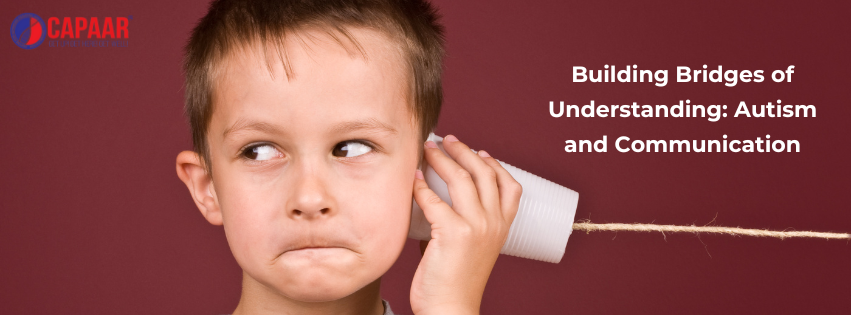Autism Centres Near Me Bangalore | CAPAAR
Introduction
In our day-to-day life, we communicate to exchange profound thoughts, emotional feelings, or professional ideas. Also, for a large number of people, talking to others and sharing feelings acts as a stress-buster. However, communicating by maintaining the norms of society can be quite challenging for those with autism. In other words, Autism is a neurological disorder that hinders the conventional ways of communication.
Individuals with Autism find it extremely difficult to follow the rules set up by society. As a result, they often feel isolated from the society. A good way of dealing with the situation is to develop different ways of communication which will be helpful for them. It can be done by adopting effective ways of communication and increasing autism awareness in society.
The different ways of communication
Individuals with autism have different ways of communicating. We often find that some individuals are taking a longer time to learn language skills. On the other hand, others might be extraordinarily talented in their areas of interest. Again, some individuals may feel difficult to talk to others, but others may find comfort in expressing themselves through nonverbal expressions that include facial expressions or hand movements. Some of the different ways of communication are-
- Nonverbal communication
Nonverbal communication can be attributed to being helpful for a larger number of people with autism. With the help of gestures of action, Autistic people can effectively convey their feelings and emotions to others. Their relatives, friends, or others with whom they interact begin to pick up the cues and have smooth interaction with them through non-verbal means.
- Augmentative and Alternative Communication (AAC)
One of the useful ways to interact non-verbally is by using sign language. There are other devices that run through software and have made communication easy. Such inventions have helped people with autism to express themselves without much difficulty.
- Investigating special interests
Some individuals with Autism develop special interests and they might not be similar to hobbies. We can use these activities to communicate and understand their feelings. The common ground on interest can develop a feeling of oneness and become a significant way for emotional exchange.
- Listening intently
We must aim to develop a connection with someone who has autism. Simply listening to them and responding to what they are trying to say will make them feel away. Little efforts for building an inclusive society can make the world a much better place.
Conclusion
The negative impact of Autism can be eradicated with empathy. We must come out of a narrow-minded attitude and wholeheartedly embrace the differences among human beings. No matter what, individuals with Autism should feel that their voices are being heard. Together we can spread awareness and defeat Autism by creating a society based on love, care, and happiness.
Other related Blogs and Podcast about Autism:
The Benefits and Drawbacks of Early Intervention for Autism: A Comprehensive Analysis
Autism in Women and Girls: Understanding the Unique Challenges and Experiences
The Impact of Sensory Overload on Individuals with Autism: Strategies for Coping and Management

